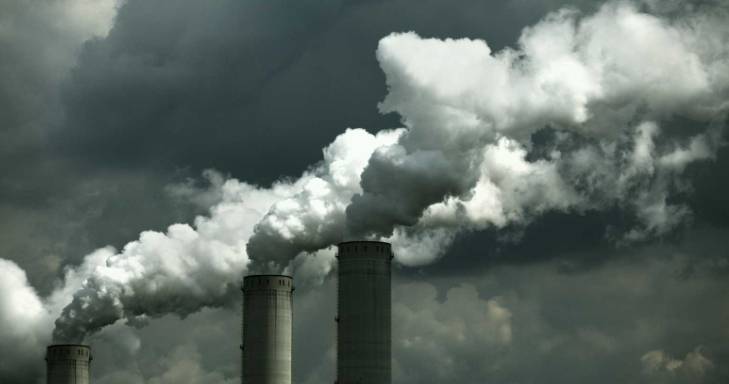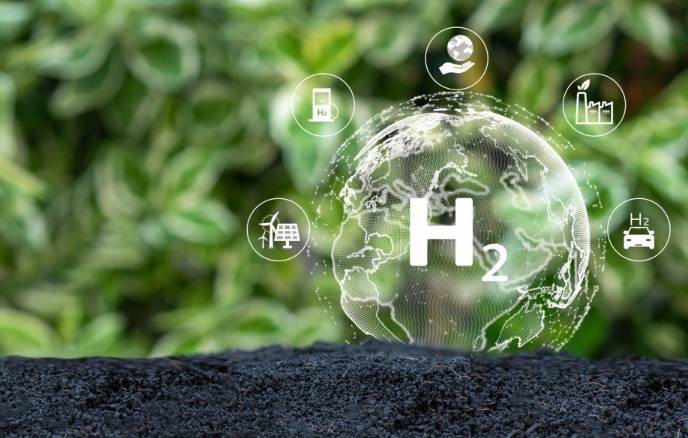The first tax of these characteristics in the world seeks equality between European companies and those of other countries. It will affect goods such as fertilizers, electricity or aluminum and will start operating in October 2023.
The institutions of the European Union have reached an agreement on Tuesday to put a price on the carbon dioxide (CO₂) footprint of many of their imports. This tax, the first in the world of these characteristics, will affect iron, steel, cement, aluminum, fertilizers, electricity or hydrogen and is intended to guarantee equal conditions between European companies and those from third countries.
The Member States and the European Parliament have agreed to create a “border carbon adjustment mechanism”, which is part of the “Fit for 55” package presented by the European Commission in July 2021 to get the bloc to reduce 55 % of their greenhouse gas emissions by the end of this decade.
The measure seeks to ensure that European companies that are subject to the bloc’s climate regulations and have to pay for their CO₂ emission rights are not at a competitive disadvantage compared to their rivals from third countries where climate requirements are less ambitious.
This mechanism is “a key part” of the EU’s climate action, “it will guarantee a balanced treatment” of imports of selected products and “is designed to encourage our partners in the world to join the climate efforts” of the Twenty-seven, highlighted the Minister of Industry and Commerce of the Czech Republic, Jozef Síkela, whose country holds the presidency of the Council of the EU this semester.
It will apply from October 2023
In particular, this tax will be applied as of October 1, 2023 -but with a transitory period where the importer’s obligations will be limited to providing data on their emissions- to imports from sectors such as the steel industry, the production of cement or fertilizers , the aluminum sector and electricity generation, as proposed by the Commission.
It will be extended to hydrogen, indirect emissions under certain conditions, certain precursors, as well as some intermediate products, such as screws and bolts and similar articles of iron or steel, as requested by Parliament.
The agreement “is a world first under the Green Deal, once again. For the first time, we are going to guarantee a fair deal between our companies, which pay a carbon price in Europe, and their foreign competitors, which do not. This is a big step that will allow us to do more for the climate, while protecting our businesses and our jobs,” said the chairman of Parliament’s Environment Committee, Pascal Canfin.
In particular, European importers of the affected products will first have to obtain authorization and then buy CO₂ emission allowances corresponding to the carbon price that would have been paid if those same goods had been produced within the borders of the community club.
Brussels will evaluate extending the rate to other products
Before the end of the transition period, the Commission will assess whether to extend the scope to other goods at risk of carbon leakage, including organic chemicals and polymers, with the aim of including all goods covered by the ETS for 2030. It will also evaluate the methodology for indirect emissions and the possibility of including more downstream products.
Under the agreement, the governance of the border carbon adjustment mechanism will now be more centralized, with the Commission in charge of most tasks. By the end of 2027, the Community Executive will carry out a complete review, including an evaluation of the progress made in the international negotiations on climate change, as well as the impact on imports from developing countries, particularly the least developed countries.
The idea is that this border carbon adjustment mechanism progressively replaces the distribution of free emission rights within the ETS emissions trading system that currently exists to avoid the relocation of those industries at risk of carbon leakage to less demanding in environmental matters.
The original idea from Brussels is that most of the revenue from this carbon border tax is used as a new source of revenue for the EU budget. Specifically, the Community Executive wants 75% of said income (about 1,000 million per year between 2026 and 2030) to contribute to the payment of the debt acquired within the framework of the recovery fund.
This partial agreement is now contingent on another agreement being reached on the reform of the EU Emissions Trading System. Parliament and Council will have to formally approve the agreement before the new law can enter into force twenty days after its publication in the Official Journal of the EU.



